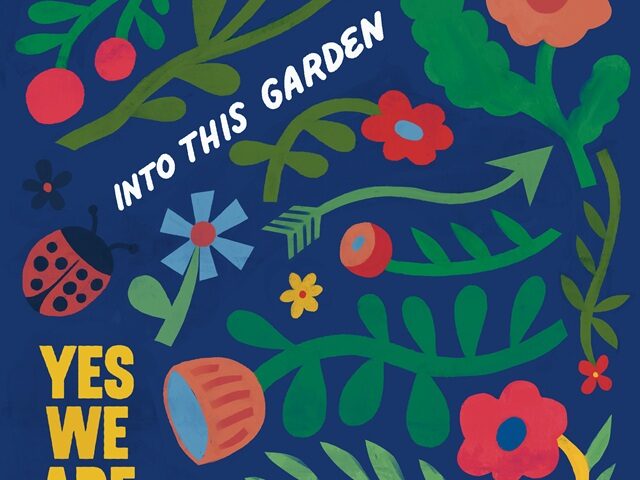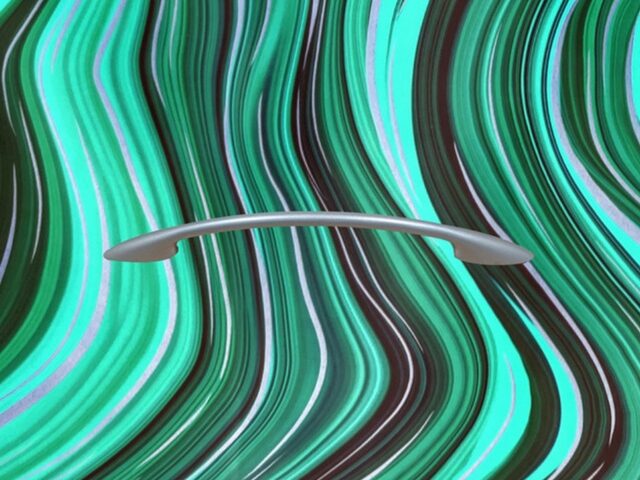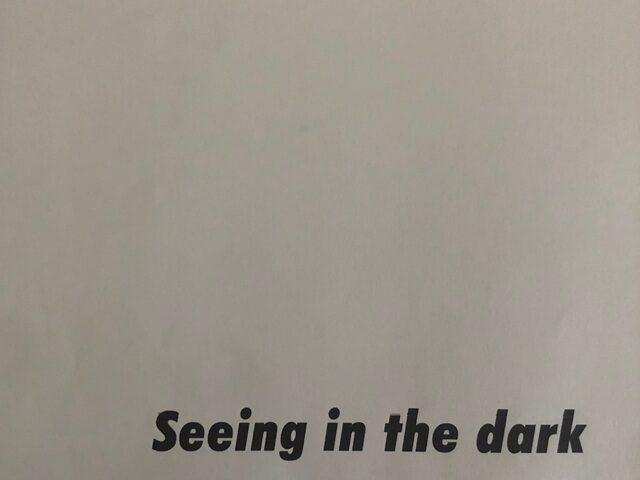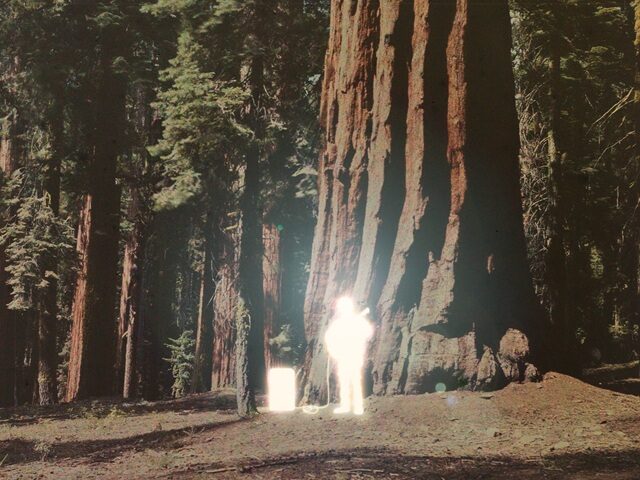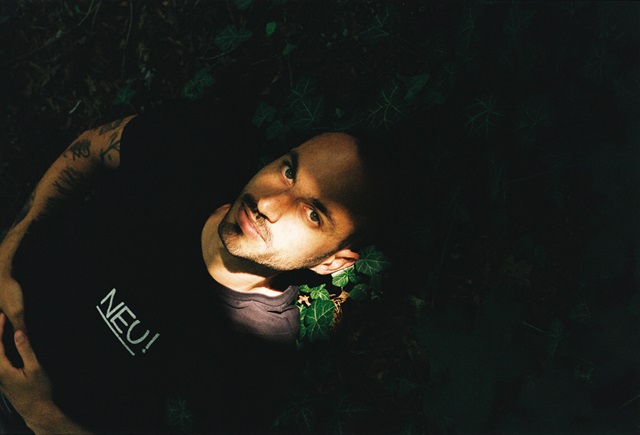
- Your new 3-track EP, ‘Much A Time In Ache,’ captivates with an atmospheric blend of ambient and folk. The first two tracks show a gorgeous ambient unfolding, while the title track finale stirs with a caressing folk sound. What inspired this creative, eclectic aesthetical direction?
First of all, thanks for those lovely words you chose to describe the album. Folk has been part of my deep-root musical core since as long as I can remember, while ambient has been a universe I started discovering more as an adult, particularly over the last 5-8 years, I’d say. I wanted to explore a way to bridge the gap between the two without making them seem too isolated from one another, or just a random mix of different things. Most of the music I did to this day was different variations of folk and rock, and I’ve been craving to dwell into the ambient realm for a long time. Different things came together last year which enabled me to have the time and availability to submerge myself full time into this project, which proved to be a transformative and simply magical endeavour.
What makes this work special to me is that the ambient songs were created using only guitar samples and granular synthesis. I wanted to use the core element of folk (an acoustic guitar) as the sole sound source for the ambient tracks, bridging the acoustic and electronic realms while keeping the foundational element of one as the starting point for the other. Limiting the tools also pushes us to be more creative and go beyond known bounds, which is very inspiring.
- The EP was recorded at Tricone Studios in Funkhaus, in Berlin. What was the experience and atmosphere like, playing and performing at Tricone Studios?
The Funkhaus really is a historic site which over the years has become a beacon in town – formerly the headquarters for the GDR radio broadcasting studios, it now is the home to music studios and schools, performance halls and diverse venues. Tricone Studios has called Funkhaus its home for over 20 years, and it’s a fascinating place – a time capsule where all that reigns is boundless creativity, while feeling like you’re in a bygone era. I’m grateful, humbled and honoured to have recorded my 3 Berlin-based albums here, and working with Francis (who runs the studio) has been an enlightening experience, particularly in this piece where he not only acted as producer and engineer, but as co-composer in the ambient tracks as well. He’s a scientific-like attention to detail, a crystal-clear vision of the path to follow and, most importantly, we just get along very well and are tightly aligned in musical references, giving each other loads of freedom which makes the overall experience enjoyable and very organic.
- The two ambient tracks feature the Taylor KC26ce, as the only sound source, and Robert Henke’s Granulator as the only instrument. What aspects of this guitar and synthesizer led you to choose them specifically as the sounds of choice?
I’ve owned the KC26ce for a little over a year, and it’s a magnificent piece of craftsmanship. Made of Koa wood, it has a unique blend of warmth and resonance, with incredibly defined overtones unlike anything I’ve heard before. The Granulator synth, a free Max for Live instrument for Ableton Live, is ridiculously powerful. Granular synthesis, my favorite sound design method, allows you to design nearly any sound without needing effects like delay or reverb. It was the perfect tool to design varied textures, melodies, atmospheres and soundscapes, using only our sample bank recorded from the Taylor.
- What are your favorite aspects of Berlin’s music scene and community?
One thing that Berlin guarantees you is that you’ll never-ever get bored. There’s just so many things happening all the time, every single day, and every time it feels new and refreshed. It’s an incredibly inspiring city to live in, sprawling in avant-garde installations, exhibitions and performances from local, international, underground and world-renowned artists. What in other places might happen once or twice a year, here it feels like common ground and happening (literally) all over the city, and I couldn’t be more grateful to have had my life here over the past years. It really opens and broadens your artistic horizons, and there’s always something new to learn and absorb.
- Do you have a specific process or ritual when creating new music?
I guess you could say I’m the walking cliché of the phrase “the best creative output comes over the worst of times”. I’m not ashamed to say that at least 80% of my work came while I was going through difficult and troublesome times, being profoundly shaken emotionally and wanting to communicate and channel something so bad. Music has always been for me the default therapy during those moments, and the most natural and intimate creations, which are the ones I truly value and appreciate the most, came out while I was just not doing well and processing deep things. Of course, sometimes inspiration hits at other times, and one must grab it immediately, otherwise it just slips away. I always keep my eye out for those too, but they’re not always predictable and available – and I prefer not to push or trample too much with my creativity and inspiration, I don’t want to force it to appear cause this has been bad for me in the past.
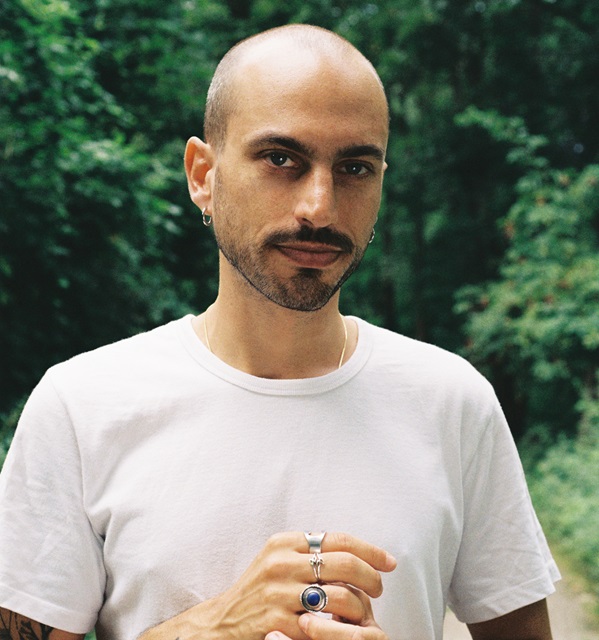
- Any favorite artists or albums you’re listening to at the moment?
Ah, so many! I get lost in so many rabbit holes these days, depending on the mood… some that I could mention are Gia Margaret and Kali Malone, for instance. I can recommend anyone to check out their work, it’s gorgeous, sweet and powerful. I also revert quite often to some favorites like New Space Music and Thursday Afternoon from Brian Eno, Einsjäger & Siebenjäger from Popol Vuh and Avanti from Alessandro Cortini. I also keep my Fleetwood Mac and Charly García very close as well.
- If you could collaborate with any artist, alive or dead, who would it be?
Absolutely I’d say Justin Vernon from Bon Iver and Brian Eno. They’ve been my greatest inspiration over the last 10 years and I don’t think there’s any other artists that resonate and move me on such a profound and emotional level. I believe they’re 2 of the most transcendent artists of our time. Collaborating with them in any kind of way would be a dream come true. So Brian, Justin, if you ever read this…
- Do you have any new upcoming projects down the road?
Yes! I’m envisioning my next album to be purely ambient based on jams, and I’ve already started working on this. My hope is to put together around 7 or 8 songs that reflect daily moods and vibes, coming out solely out of improvisation sessions after 1 or 2 takes, nothing else, with completely fresh and new setups for each… I’m excited!
- What do you find is the most satisfying part of being an artist?
I believe that having a language, a channel that belongs to you alone, becomes something deeply personal and intimate. It’s the closest we can come to tangibly revealing what our souls are like. For me, that channel is music. It’s beautiful to witness others finding their own channels in writing, performing, film, painting, gardening, or whatever else speaks to them. Being an artist is a liberating experience, and I feel it becomes truly sacred when it remains personal and intimate, hence a reflection of one’s inner world.
- What is the biggest challenge you find in today’s music industry?
Aside from the usual struggles all artists face, I think nowadays some things are just out of focus. The idea, for example, that a digital identity and social media presence can be more important than the artform itself feels frustrating. And I see this a lot with many artists, who are talented but if they don’t fulfil certain prerequisites that will allow them to quickly become a marketable product, then it’s much harder for anything to happen. I think it kind of goes against what being an artist is, and it can be particularly challenging if you’re an introvert like myself. At the same time, you see many people who are not there for the art, but rather to follow some hype and present a pose, which I think creates a big imbalance.


